By Paul Comben
My Five Games of 1914 in France and Belgium
This is certainly not a comprehensive list of 1914 titles, as I can think of at least three or four others; but these are the games I own on the subject, and thus feel confident to have a chat about. In the partner article to this, I highlighted some of the key aspects of the 1914 campaign in France and Belgium (command issues, failed plans, failed tactics, exhaustion at all levels after so intense a period of marching and fighting). Here I will look, with a light touch, at how these five games represent the history and historical possibilities of the 1914 campaign, and hopefully find something positive to say about all of them.
1914 ( Avalon Hill )
I will always have a soft spot for this old warhorse, as it was the very first wargame I ever owned. I was not quite in my teens, the game about eight years younger; but whatever I think of my own shelf life, at least I was not pulled out of circulation early, having bemused some and disappointed others by being incredibly difficult to approach and about as much fun to be involved with as any given Sunday in mid-Victorian England.
Churchill once wrote that no period of the Great War was as fascinating as the period of manoeuver and fleeting opportunity following its commencement – but he had not played 1914. At school, I was truly desperate to get some friends involved in my new hobby, but no way was I ever going to set up this game and insist we give it a try. I played it, all on my own, and did so with every effort to get it right – but I never did do that. I filled in the mobilization charts, I sorted all the step loss corps replacements, I tried the advanced rules and the advanced advanced rules…and the optional rules you could use with the advanced rules (but ideally with some rules replacing other rules); I read the manual, I rolled the die…and then the lights went out.
Yes, decades after Sir Edward Grey metaphorically described the onset of war and the ruin of the old world, here in Britain the lights, lamps, television, radio, and any other thing you might care to drag into a poetic tragedy of national misfortune, were still going off or out because of “differences” between government and trade unions as to who had the most right to put the plug back in.
It was not a good time to be learning a very complex game – but “complex” here should not automatically imply incredibly sophisticated or clever. 1914 had plenty of detail, but so did the 1925 minutes of Bognor town council , and who ever really goes round them to take a closer look? On the face of it, this game should have been every history addict’s dream – you had artillery degrading fortresses; the grinding reduction of your corps step by step; you had a very serious amount of fog of war (in advanced, very advanced, and transcendental ranges); you had a variety of initial deployments, and yes, you had Eisenbahntruppen! But, on the other hand, you had a game moving somewhat slower than a glacier on a very cold day; and in its highest form, a game that was hardly on the board at all, as all that fog removed anything you were not supposed to see, which meant moving units via lines drawn on the not very big mobilization map sheets.
I never bothered with that, as it was like trying to chart the movements of a wasp in a room full of other wasps, using nothing but a cheap pen and a piece of paper scarce big enough to accommodate a modest shopping list. Yet that paled into insignificance compared to how different units with different movement factors could be moved. There was this other rule you see, small but utterly frightening. To reflect the reality that units with bigger movement allowances would be moving quicker than units with more modest allowances, you were meant, on your sheet, to move some bits before anything else got going…and some things might still be moving after everything else had stopped…and then, you were supposed to compare your lines and arrows with your opponent’s, see if anything had crossed at the same speed at the same time, and then, assuming the lights were still on, have a combat, or just plain give up.
Looking back, 1914 could be said to represent the hobby trying to move on from the white bread days of the classics, but in this early effort, sadly mistaking uber detail and clutter for simulation effect. Then again, playing this for any period of time would give you the sense of Moltke’s weariness with the burden placed before him; and as Joffre, trying to get a rise out of this game was most like to have you reaching for the snacks. Certainly, it is a lesson for designers that if you have some provision that really needs to go into your design on this or that subject, you better make sure it will fit properly. Likewise, if you put in all the detail you can, there had better be something/somewhere to house it in – no good having that ornate ceiling with nothing surrounding it to hold it up and give it meaning.
But I still have regard for this game – despite the fact that I am hardly likely to play it again. One reason is that it must have involved a serious amount of effort to put together, and that is worthy of regard. And in addition to that, for a person like myself, whatever a thing was supposed to be when it was first around, time and the changing contexts of life can offer up different meanings and different values. As such, this game is inextricably linked to the last time I really spoke with my grandfather, William Comben, who was a sergeant in the BEF of 1914. I had that game with me the Christmas we were all together, in 1972. Far from being appalled that I had a “game” on the war he was in, until desperately wounded in 1916, he was absolutely fascinated. He spent near an hour talking to me about his time on the Western Front, pointing to places on the map where he had served, and, truth be told, just remembering all the good things. And having the game for that reason is always good enough for me.
The Schlieffen Plan (Dave Schroeder )
Not so very long ago I did a major article on the entire Weltkrieg series for The Boardgaming Life website, so I will try not to repeat myself overmuch here.
This offering was the first part of Dave Schroeder’s mighty epic of the Great War, and after having a bit of a life of its own, it got absorbed by The Western Front title, which is where you will more likely find it today. Of course, there is a socking great big gap between me buying Dave’s game, and having 1914 bought for me by my dad. The interim did see the occasional Great War title produced here and there, but I rather suspect that 1914 had turned many a player and many designer away from any notion of going anywhere near the Western Front…unless they could put the Red Baron in it or over it somewhere.
The Schlieffen Plan does have a few design aspects in common with 1914 – the killing power of the defender, the grinding down of fortresses, and the steady wearing away of your strength by incremental losses, albeit at the divisional level this time. But in the main the ethos is very different; for The Schlieffen Plan was this first part of a much bigger project, and so broader strokes were applied to various parts of the game, leaving us with a pretty clear look at the overarching concept – supply and firepower. There was precious little fog of war, or what is moving when malarkey; instead, you looked to feed the guns, and to keep them fed. Scripting did appear at the very beginning, in that the French were not only committed to a Plan 17 deployment, they also had to execute the ruddy thing. Meanwhile, the Belgians were required to retreat into Antwerp pretty soon after hostilities started…and the Germans were required, at the very least, to sort of look at them, as well as sending something to East Prussia.
One other sniff of a similarity with 1914, and this is something that will also apply to another design later, was the lack of restriction on where the great bulk of units could go as the campaign developed. In both these games, if the Germans wanted to advance along the coast of northern France, there was nothing stopping them; nor, for that matter, were the French forbidden to defend anywhere frequented by soft sea breezes. How you feel about this depends, I suppose, on how much of the historically unfolding Schlieffen you want; but I for one do not feel entirely comfortable with large chunks of map being off bounds until the history says you can go that way – after all, you are supposed to be making your own history, and certainly as the French, it is bad enough having to embark on Plan 17 without also being told that you cannot go somewhere unless Das Heer goes there first.
And what about the famous “Race to the Sea”? Irrespective of the precise shape of your own battlefront, recreating anything like what occurred in France during the early days of autumn is a bit difficult with the standard mechanisms of most, if not all the games in review here. And that is why, in order to recreate special moments of manoeuver, Ted Raicer’s Grand Illusion opted for dedicated phases for the special movement of entire armies. This was done to emulate the famous withdrawals that were a hallmark of the campaign; but would surely apply as a precedent to any instance when something more than the standard rules were needed to do a job.
But that is to get a bit ahead of myself, as there is one other aspect of The Schlieffen Plan worth a mention. Both this game and 1914 had time spans nudging into the onset of trench warfare. 1914 did not do very well here, as the corps scale and the scale of the map left you having to stretch out everything to get anything like a line to exist. With divisions, The Schlieffen Plan offered far more flexibility with no extra effort, and allied to some very straightforward but effective rules (as the rules evolved) for artillery effectiveness and minimum defensive requirements, the game was perfectly capable of moving into the trench era without contrivance.
A favourite.
Guns of August ( Worthington )
People seem to have differing opinions of where Worthington has gone with its recent projects. Those who really like them, well, fair enough. I am not going to tell people what to play; it is just that it has been a bit of a while since Worthington’s up and coming line really offered anything I could sink my teeth into – not a plea for bigger rulebooks, just more meat on the bones…and stuff on the maps.
But this is also the company that previously gave us Screaming Eagles, Ghost Panzer, Victoria Cross and the Guns of August/Galicia pairing. All of them wonderful wargame experiences, and this with a mere fraction of the rules one would normally expect with this sort of subject matter. The Guns of August, covering much the same time span, and using much the same scale as 1914, brilliantly demonstrates what a modern designer (John Gorkowski) can do with a few simple mechanisms placed in a set of rules covering a mere seven pages. If one says this approach is broad brushed, well at least the brush is pointing at the right parts of the canvas.
Fog of War in GoA is just a matter of concealing units under a Fog of War counter, so no taking everything off the map and drawing everything on a piece of paper. And the frustrations of Command and Control are handled well enough by a chit pull system; and the French are obliged to do themselves enough hurt by fulfilling offensive requirements that can only be shaken off by an indeterminate number of hapless lunges…and the counters look great, and the system is clever, and the map is…not very good.
Something went wrong here, leading to the infamously faint hex grid. It is just about workable along most of the surface, but round the Vosges, forget it – you might as well be looking for a fishing line in thick fog. It is a shame, because I happen to think the hobby can always do with designs like this – short on rules, big on effect, moderate on playing time. It is some measure of its quality, that despite the map’s shortcomings, I still like to give this a whirl pretty often.
Grand Illusion ( GMT )
This is a Ted Raicer design, and his second visit to the opening weeks on the Western Front – the first, End of Glory, has never been seen by me in any of its versions, bygone, or bang up to date.
It is a regrettable aspect of the hobby that some titles appear and disappear in fleeting moments of time. Many games get their launch, hang around a bit, and then drift off onto the seas of obscurity.
Grand Illusion seems a case in point – maybe the rules were a little difficult to grasp, but there was clever stuff all round the design. Fog of war was not so much a feature, but the Fortunes of War was. Instead of having uncertainty as to what was where, the game highlighted the uncertainties of combat, as whatever you had, and whatever it was facing, was subjected to chances and hazards beyond simply the material calculation of firepower. As a consequence, even the best-laid plains could rightly go awry.
Command and Control was here managed by the use of Command Administrative Points – actions cost points, and how many points you got was shaped by what was going on in the game: i.e. has Moltke gone, what shape is Joffre in (big, round and retreating, or the Mark II version, big, round and ready for a bit of Boche before breakfast).
Of the games looked at so far, this was certainly the most scripted. There was no chance to defend Liege, as that was deemed already fallen; the French had to do Plan 17, with some chance they might get a point or two from it; the territory covered by the historical Schlieffen Plan (or whatever we call it) had to be kept to; the two side’s respective big retreats were framed and ready to go; and the Russians would move into East Prussia to which a response was required. If you looked at the turn record for this inconspicuous gem, scarcely a turn was without its snippet of history to be implemented.
How players feel about notable levels of scripting is naturally going to vary considerably. For me, a mitigating aspect with a scripted form of gameplay is that it can help prevent (but not guarantee) games going gamey. Personally, my heart tends to sink when I see play that the rules might well allow, but which the designer and an appropriate regard for historicity would never have countenanced. Turning a serious design into an aggressive form of ludo is a total anathema to me. Then again, incautious scripting can create gamey play, as players artificially wait upon predictable, scripted events. I tend to think, however, that Grand Illusion got things about right in terms of turning a valid design vision into a finished product.
But then, concealed behind the game’s commands and caveats there was one other potential story, referred to in a highly entertaining and detailed play through by Enrico Viglino. Having totaled the victory points one might get for doing Schlieffen sort of things, he concluded you could not prevail as the Germans by moving the great wheel round – there was simply not enough on offer. Developing this theme, he voiced the belief that the game was essentially predicated on the view that the Schlieffen Plan was not going to work – so, as the Germans, you needed to do more. In truth, however, there was a bigger design issue under review here, for one wonders if Ted based his victory calculations on what the Schlieffen Plan was deemed capable of in relation to the long held assertions of what it was about, or whether the revisionist argument, about a less fixed plan with more moderate aims than total and swift victory, ever entered his reckoning? It would be interesting to find out.
But what was certainly a plus, was that this was the first game I had on the subject which actually did something notable regarding growing army fatigue as the campaign went on – by limiting the number of units that could recover full status each turn from turn 12. Frankly, for me the only pronounced negative was the rulebook. It came across as one of those sets, that, no matter how many times you read it, was always hard to pin down in terms of finding anything specific. I must admit I had a job locating various things even when writing this particular article. Nevertheless, apart from that, this was a design truly deserving more attention than it ever really got.
1914 Offensive à Outrance ( GMT )
In a sense, we come full circle. The title is 1914, and as was the case forty five years earlier, the design team put everything into a highly detailed look at one of the most momentous campaigns in history. Physically, the modern game is far larger than its predecessor, but the real difference lies in a reply left on Boardgamegeek by the designer, Michael Resch. Responding to criticism of several of the game’s perceived traits, he answered, inevitably, “that when designing a game, compromises have to be made’. Of course they must be. There was, so it seems, precious little compromise with the Avalon Hill title near half a century ago, and look what happened. “Packing it all in”, irrespective of whether it fits or not, is not being clever, it is being indulgent and foolish – and we should be thankful to designers who ensure that we do not go too mad trying to work with the products of their handiwork.
So, what to make of 1914 OàO? I am rather tempted to say that it really does not take you anywhere, that, each in their own way, The Guns of August, Grand Illusion, The Schlieffen Plan, are also going – the difference being that those other titles are out for a view of the historical landscape in general, whereas 1914 OàO wants you to get out and start examining the strata of the geology and the interaction of the flora and fauna. The research is vast, and one only has to look at the information placed on the average divisional counter to see the end product of some very serious consideration. It will be up to individual players whether they want to go the long way round to essentially the same destination that Guns of August et al could have taken them to. But that is hardly the end of the story, as 1914 OàO offers deep levels of logistical procedure and army co-ordination/administration that are integral to its particular profile and focus.
Perhaps in years gone by, I would have been persuaded by the vast amount of detail in the game, its size, its scope etc., to say it was the ultimate work on the subject – but somehow, I am not convinced it is, or that it really should be described like that. That is not to downplay the qualities of an incredible piece of design and development, but rather to express my own preference for an impression over a seriously academic piece. And I would ask readers to consider this: the units in the game are festooned in factors and values – and one might think that covers every contingency that the game and the historical situation can offer. On the other hand, the more established the range of detail, the more difficult it may be to shift to anything else. Grand Illusion’s unit information is incredibly simple:
Infantry/Cavalry/HQ/Artillery/Basic Combat Value/Basic Movement Value
And the great thing about simplicity, is that it can carry extra trappings, finessing, nuances, without all falling in on itself. So, in GI, the French Strategic Withdrawal, the German Withdrawal, the changing postures of the top brass, can be reflected with easy additions and modifiers, that are not going to get tangled up (in my brain at least) with whatever else I am trying to hang onto. The obvious historical example of this, in game design terms, was SL/ASL vs Up Front. Yes, the rules to UF were a bit of a nightmare in the end, but the principle was sound – give the player complex decisions to make, not complex procedures to get lost in.
Nevertheless, there will always be the historical gamer who want something big and highly detailed, and in this regard, 1914 OàO is a superlative piece of design. But it remains part of the reality of our hobby world, that if you make something as big and detailed as this, your inevitable compromises, simplifications and omissions are likely to be sticking out like a sore thumb as gamers really want the detail to be all over the place. Thus, the response Mike Resch made on BGG to comments on the combat system, rail repair, and other issues. To this I would add that if you try to put it all in, you will end up back where it all started, in 1968/69, which would be a sad thing, given that so much greatness and quality actually arose from standing on the shoulders of those who were brave enough to have the first try.
Paul Comben


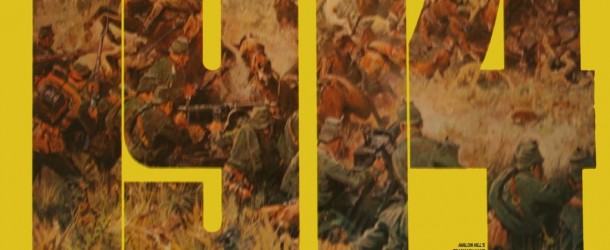
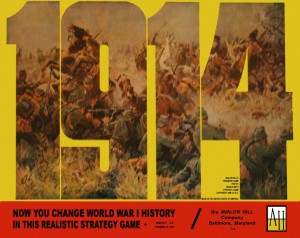

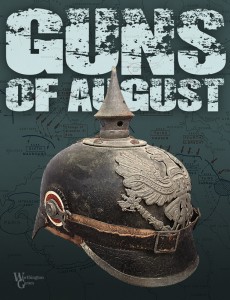
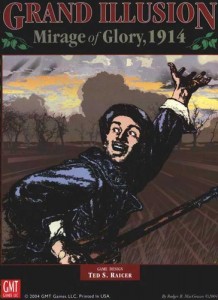
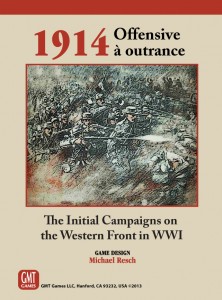






Oddly enough 1914 was also the first wargame I ever owned as well. I can still remember punching the counters out whilst watching James Mason in 5 Fingers. I still have my copy 46 years on.
Thanks for the note. I never owned 1914, in fact I had never even heard of it until this article. My first wargame was Stalingrad.
Christmas 1972 had the Olivier Henry V on BBC2 in the afternoon, and there must have been Morecambe and Wise in the evening.
All told, the earliest game I really enjoyed and thought special was Panzerblitz. And yes, it’s nice to have pleasant memories of such things acting as markers in life.
Paul:
Congratulations on having your last two articles on The Boardgaming Way picked up by Consimworld News. They are fine additions to the site and I’m proud to have them here.
Thanks Again
– Fred
Nice to see balanced assessments of these titles all in one place. Thanks.
-John
My pleasure.
This review told me almost NOTHING about any of the games that I could use to determine if I might be interested in any of them. To my view, you would have to be intimately familiar with each to understand any of the references. In fact, after reading this the only thing I can say I’ve learned is the title of another game on this subject that I didn’t know about coming in.
I’m sorry you did not enjoy the article. Plenty of people did, and understood that this was a look at how different designs have approached the opening campaign of the Great War on the Western Front – what they have chosen to highlight, and an overall sense of the systems involved. In short, this article was never intended as any sort of “potential purchase” evaluation of the titles concerned. Offering a clue that way, apart from everything else, was the article featuring a game that has been out of print for not too far short of half a century.
I fear you have been too narrow in your interpretation of what a review is or can be. At the end of this year, the BBC will present a review of global events – which is not meant, despite whatever exotic location gets a view, as a guide to potential holiday locations. And when the Queen reviews the Guards at the Trooping of the Colour, she sees the march past and the regimental flag without using the process to work out if she wants or needs to get a couple of new trumpets and a flagpole.
I would like to point out that I do all these articles by my own volition, as a means of supporting the hobby and giving its participants a wide range of materials to read. I spend many hours putting all these various pieces of prose and analysis together. There should be something for everyone, but then, I never read a copy of The General from cover to cover, as there were bound to be articles that were not to my tastes no matter how well they were written.
All the best
Paul.
I always enjoy Mr. Comben’s reviews. What I appreciate most in this review is the fairness which he gives to players like me who love more detail and not less. I have not played OoA yet, but am getting into the system via 1914 SmS.
The thing Mr. Comben fails to include when separating similar games is the often overlooked attraction for myself — game mechanics themselves which Resch has achieved through his own unique style. For me getting to the same design outcomes by way of new and innovative mechanics is part of the joy of discovering a new game or series. I think there is often confusion by reviewers who conflate unfamiliar game mechanics and complexity. At only 30 pages with Special Rules (1914 SmS) I believe that is the case here.
– See more at: https://theboardgamingway.com/several-ways-schlieffen-essay/#comment-501